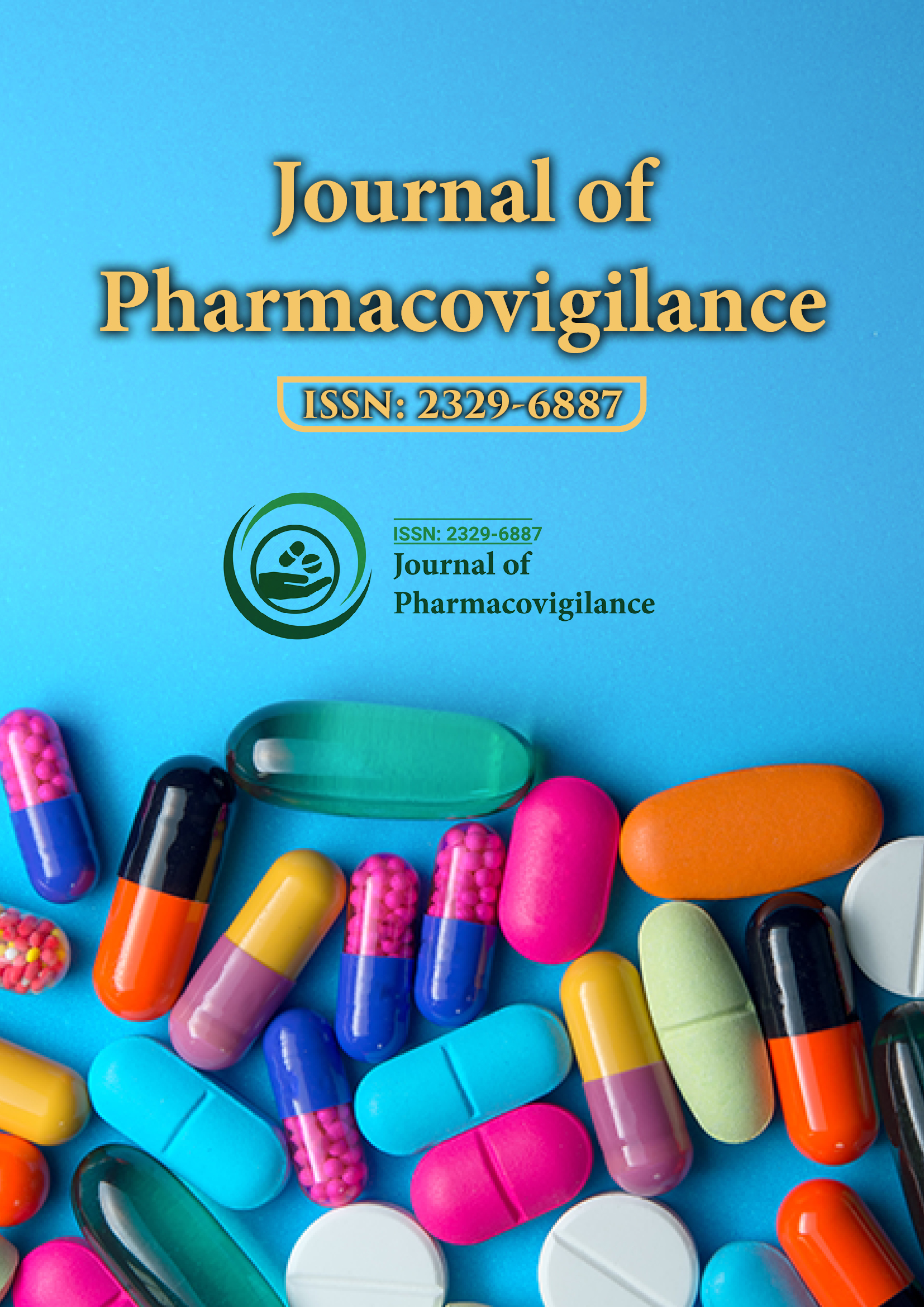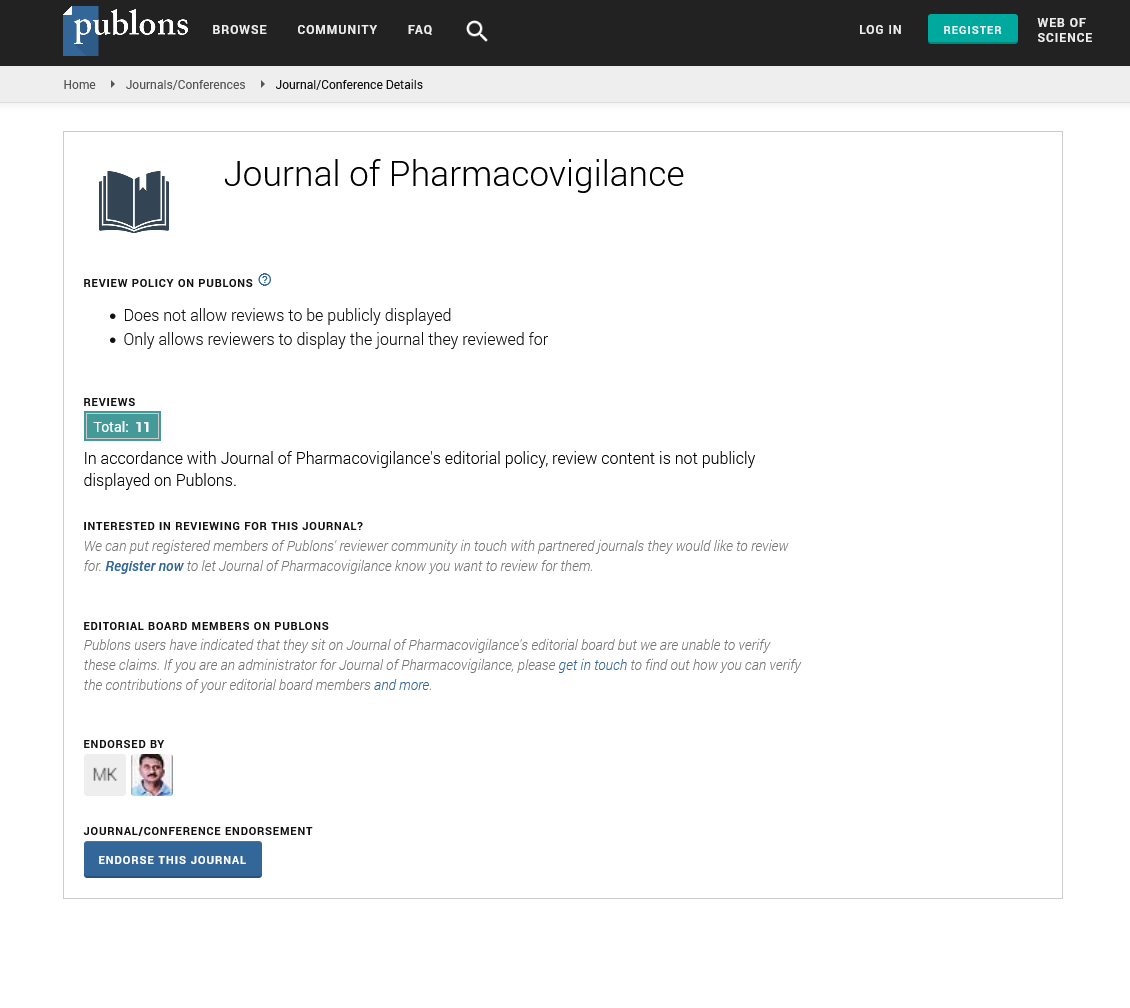Indexed In
- Open J Gate
- JournalTOCs
- The Global Impact Factor (GIF)
- RefSeek
- Hamdard University
- EBSCO A-Z
- OCLC- WorldCat
- Publons
- Euro Pub
- Google Scholar
Useful Links
Share This Page
Journal Flyer

Open Access Journals
- Agri and Aquaculture
- Biochemistry
- Bioinformatics & Systems Biology
- Business & Management
- Chemistry
- Clinical Sciences
- Engineering
- Food & Nutrition
- General Science
- Genetics & Molecular Biology
- Immunology & Microbiology
- Medical Sciences
- Neuroscience & Psychology
- Nursing & Health Care
- Pharmaceutical Sciences
Commentary - (2024) Volume 12, Issue 1
Integration of Wearable Devices and Mobile Health Apps in Pharmacovigilance Reporting
Alper Coskun*Received: 29-Feb-2024, Manuscript No. JP-24-25630; Editor assigned: 01-Mar-2024, Pre QC No. JP-24-25630(PQ); Reviewed: 15-Mar-2024, QC No. JP-24-25630; Revised: 22-Mar-2024, Manuscript No. JP-24-25630(R); Published: 29-Mar-2024, DOI: 10.35248/2329-6887.24.12.471
About the Study
Pharmacovigilance, the careful monitoring of drug safety aftermarket authorization, safeguards public health by identifying and mitigating Adverse Drug Reactions (ADRs). Traditional pharmacovigilance methods, heavily reliant on passive, spontaneous reporting, are plagued by underreporting and delayed detection of safety concerns. The integration of wearable devices and mobile health (mHealth) applications presents a transformative approach, enabling real-time, patient-centric data collection for comprehensive pharmacovigilance. This article explores the immense potential of this integration, highlighting its advantages, challenges, and future directions for optimizing drug safety.
The fundamental of ensuring medication safety lies in strong pharmacovigilance practices. This active surveillance process monitors the effects of medications once they are commercially available. However, conventional methods of ADR reporting, primarily dependent on healthcare professionals and patients voluntarily submitting reports, are often constrained by underreporting, delayed detection, and incomplete data.
The area of wearable technology offers an innovative approach to pharmacovigilance. Wearable devices, encompassing smartwatches, fitness trackers, and smart clothing, continuously monitor a multitude of physiological parameters, including heart rate, blood pressure, sleep patterns, and activity levels. When coupled with mHealth apps, these devices can collect, analyze, and transmit this data to healthcare providers and pharmacovigilance systems in real-time.
Advantages of integration
Unlike traditional methods that rely on patient recall, wearables enable continuous data collection, providing a more comprehensive picture of a patient's health and potentially capturing ADRs as they occur.
Wearables empower patients to actively participate in pharmacovigilance by capturing their experiences and subjective symptoms that might otherwise go unreported. This subjective data can be invaluable in identifying ADRs with less prominent physiological manifestations.
Wearable data can significantly complement traditional methods by providing objective physiological measurements alongside patient-reported symptoms. These comprehensive data sets encourage a more holistic understanding of potential ADRs.
Real-time monitoring with wearables has the potential to facilitate earlier detection of safety concerns, enabling swifter intervention and risk mitigation strategies.
The sheer volume of data generated by wearables could expose previously unknown or underreported ADRs associated with medications, leading to improved drug safety profiles.
Challenges and considerations
Safeguarding sensitive patient data collected from wearables and mHealth apps is important. Strong security measures, coupled with clear and comprehensive patient consent procedures, are essential to ensure data privacy and build trust.
The quality of wearable data can vary significantly depending on the type of device, the algorithms employed for data processing, and user behavior. Establishing standardized data collection formats and interpretation methods is crucial for accurate analysis and reliable conclusions.
Seamless integration of wearable-generated data with established pharmacovigilance databases and healthcare information systems is necessary for efficient analysis, reporting, and informed decision-making.
The limited battery life of some wearables and the potential for user fatigue regarding data collection can hinder long-term data acquisition strategies. Implementing user-friendly interfaces and exploring alternative power sources are significant for sustained user engagement.
The power of Artificial Intelligence (AI) and machine learning algorithms can be provided to analyze large-scale wearable data. These sophisticated algorithms can facilitate signal detection and identify potential ADRs more effectively, leading to more targeted interventions.
Collaborative efforts are needed to establish standardized data collection formats, strong data security protocols, and clear regulatory guidelines for wearable-based pharmacovigilance. This standardization will ensure data quality, facilitate seamless integration with existing systems, and encourage trust among stakeholders.
Educating patients about the significance of pharmacovigilance and actively encouraging their participation in wearable data collection is critical for the successful implementation of this approach. Empowering patients through educational initiatives encourages a sense of shared responsibility for medication safety.
Conclusion
The integration of wearable devices and mHealth apps offers a change of opinion for pharmacovigilance. By enabling real-time, patient-centric data collection, this approach has the potential to revolutionize drug safety monitoring. Addressing the challenges related to data privacy, standardization, and user engagement is essential to unlock the full potential of this innovative approach. By controlling the power of wearable technology, we can move towards a future where medication safety is continuously monitored, optimized.
Citation: Coskun A (2024) Integration of Wearable Devices and Mobile Health Apps in Pharmacovigilance Reporting. J Pharmacovigil. 12:471.
Copyright: © 2024 Coskun A. This is an open-access article distributed under the terms of the Creative Commons Attribution License, which permits unrestricted use, distribution, and reproduction in any medium, provided the original author and source are credited.

